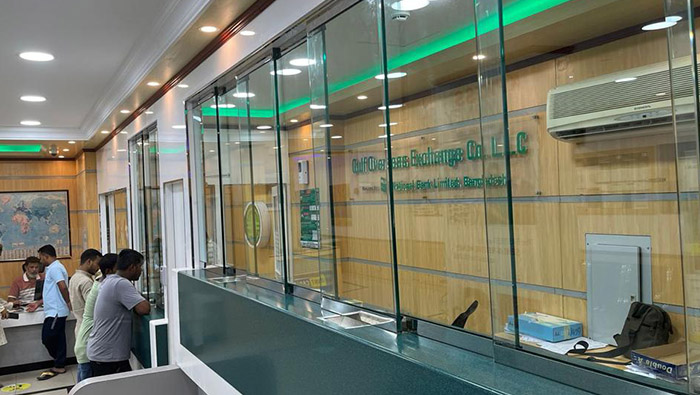
MUSCAT: The value of Indian rupee against the Omani rial has drastically fallen, with the exchange rate of OMR1 reaching INR217.60 on Monday.
This fall in the value of INR has pushed several Indian expats to send more money back home.
R. Madhusoodanan, a financial expert based in Muscat, said that the Indian rupee tanked on Monday due to heavy sell off in the Indian stock market by foreign funds, weak employment data released in the US on last Friday and the geopolitical issues in the Middle East. “The rupee closed at a record low of 83.8450 against USD. Heavy sell off happened in global equities as well due to worries of a likely US recession. The Japanese Nikkie market, Nikkie dropped by 12%, the highest in the recent past,” he said.
He also said RBI’s intervention mitigated further downfall of Indian rupee. “India holds a forex reserve of $650 billion which gives comfort to RBI against a big downfall.
The outlook for the INR is range bound in the short term horizon but largely depends on the outcome of the US Fed meeting being held today, key Chinese data and the RBI monetary review happening from 6th of August 2024,” he said.
He also said Bangladeshi Taka(BDT) is also depreciating against the US dollar due to high demand for dollars for settling import payment obligations.
“The BDT rate fixed by the Government for the last 2 months was 118 against $. However, of late, banks are seen offering higher rates. BDT rate is likely to weaken further, at least temporarily, owing to the current political situation in Bangladesh,” he added.
On Monday, exchange houses in Oman were offering 309 Bangladeshi Taka against one Omani rial.
He also said that usually blue collar workers try to take full advantage of the spike in exchange rate and send more money home during this time. “So, there is usually a marginal increase in remittances during this stretch,” he remarked.
Rupee hits all-time low
The Indian rupee depreciated versus the US dollar on Monday to touch its all-time low, tracking global heavy selling in stock markets, over risks that the US may potentially slip into recession.
At 12.18 pm on Monday, the Rupee traded at 83.85 versus Friday’s closing of 83.75. It opened at 83.78, surpassing the previous lifetime low of 83.7525 from Friday.
Analysts say that the Rupee’s fall is in line with the weakness in the global market, US recession fears, and add to it the geopolitical tensions.
“U.S. recession concerns led to worries about foreign outflows from India and emerging markets,” said Mumbai-based Ajay Kedia of financial services firm Kedia Advisory.
“The fall is attributed to concerns over a potential U.S. recession, which has spurred worries about foreign outflows from India and other emerging markets. The selloff in U.S. and Asian equities, following a disappointing U.S. jobs report, has intensified these concerns, causing significant market jitters,” Kedia said in a report.
The weak U.S. jobs report released on Friday showed that the economy added only 114,000 jobs in July, significantly below market expectations of a 175,000 increase. Additionally, the unemployment rate unexpectedly jumped to a high of 4.3 per cent, and wage growth slowed more than anticipated.
Kedia said the Reserve Bank of India might allow USD/INR to move higher to 83.90. He sees support at 83.45, and resistance at 83.95; and breaking 83.95 could push it to 84.10/84.20.
Jamal Mecklai, a veteran in the financial market, said, “US recession fears, equity market collapse would create a risk-off sentiment. Equity decline could be quite serious and could last for a long time. So the rupee will naturally take some pressure.”
In 2022-23, the Indian Rupee was in the news cycle for a considerable part, though not for good reasons.
Monetary policy
Monetary policy tightening by various central banks to contain inflation, the war in Ukraine leading to price rise for crude oil and subsequent realignment in the global energy supply chain, and strengthening of the US dollar index kept the Indian currency under pressure.
Since then, the rupee has been off the news cycle, as it traded largely steady months thereafter.
In 2022, the Rupee depreciated over 11 per cent on a cumulative basis, data showed. It breached the 83-mark against the US dollar in mid-October, to hit an all-time low.